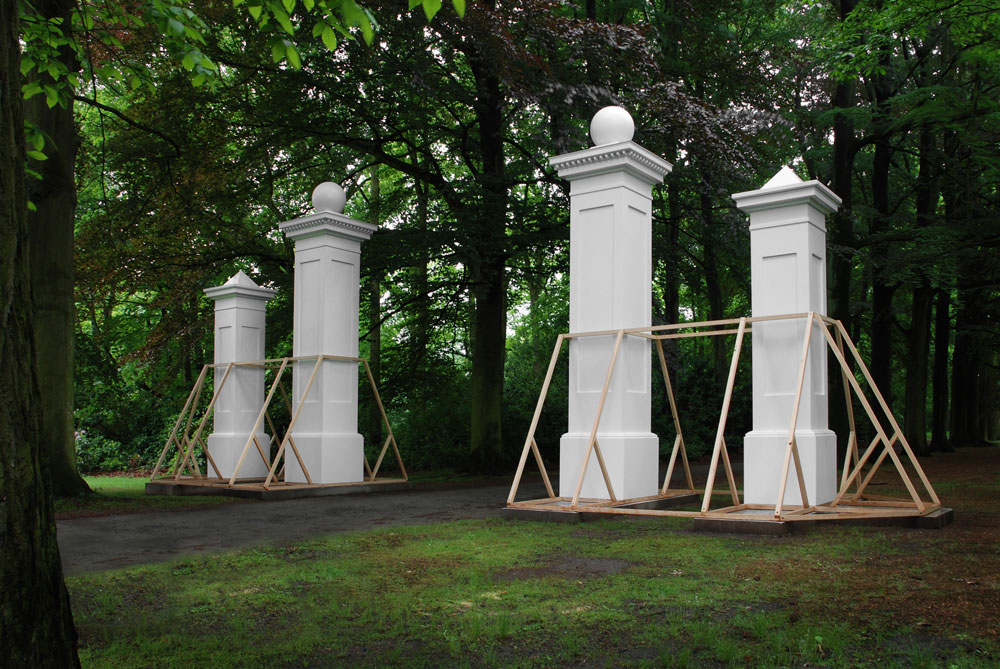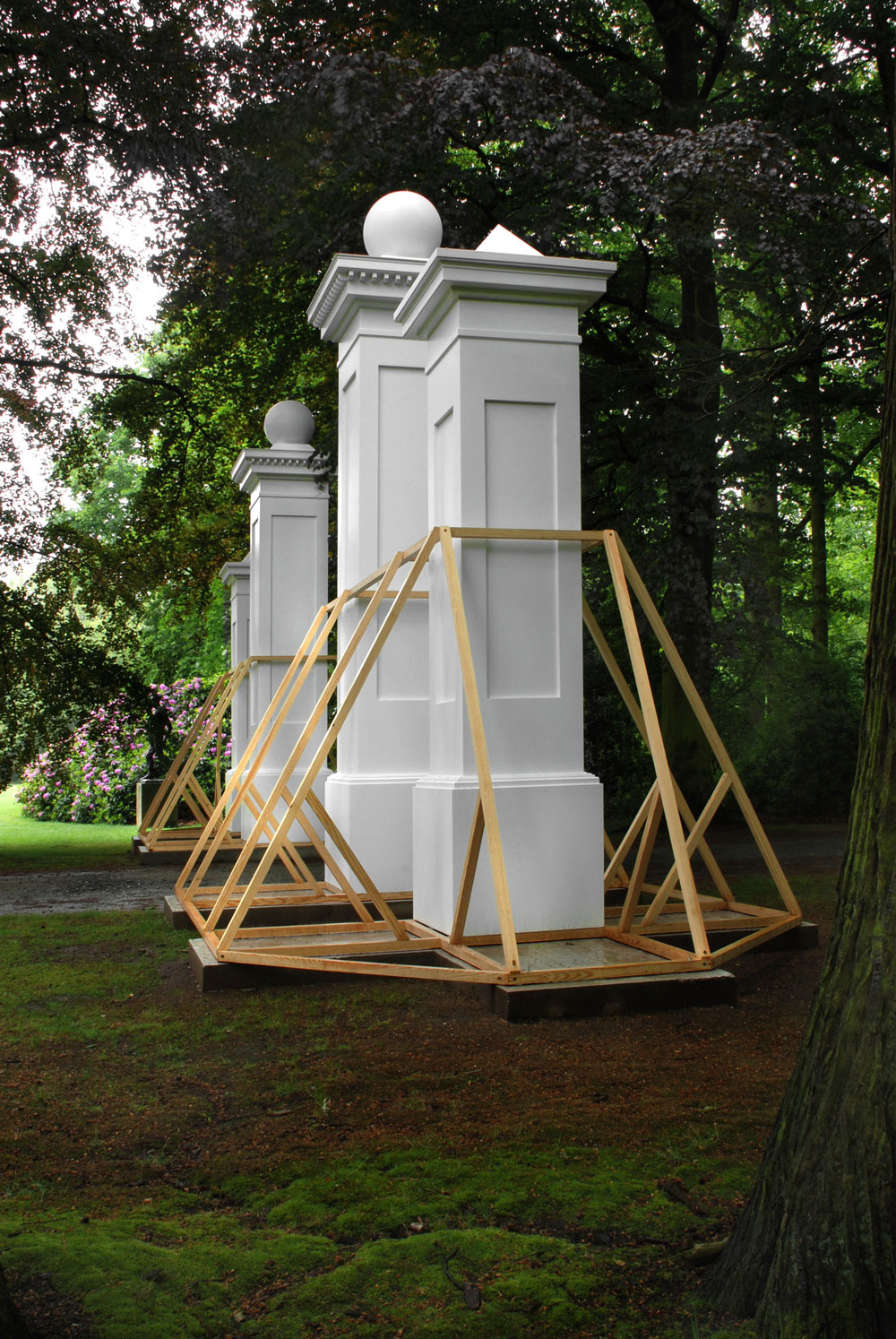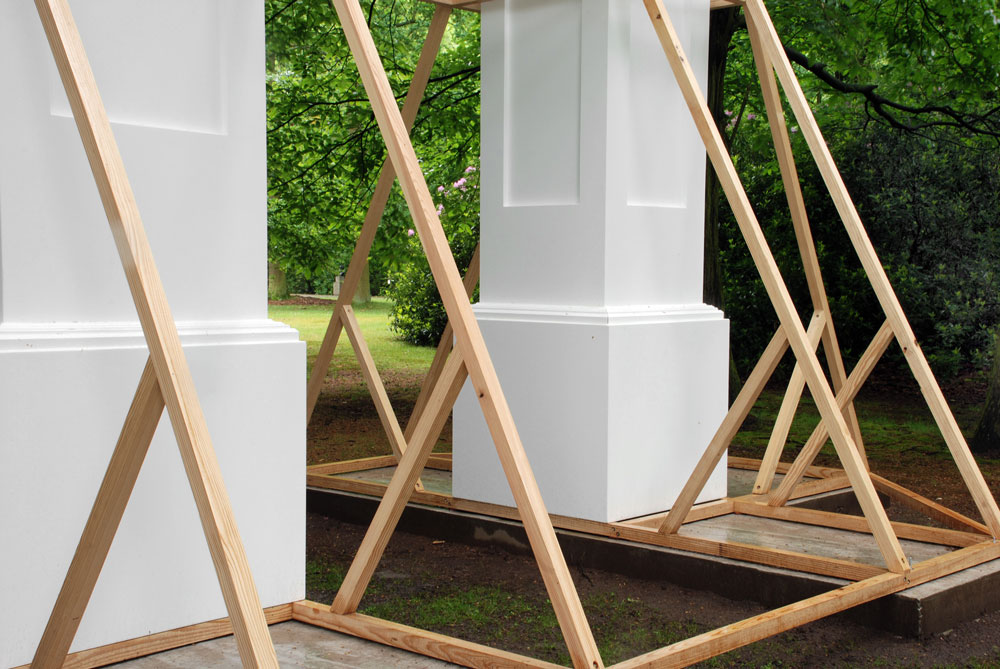Entrance Kit for Sculpture Garden
Sculptures & Installations670 x 1700 x 410 cm
wood and concrete
installation at the Open-air Museum, Middelheim Museum Antwerp, Belgium
photo: C. Demeter
In the middle of the sculpture park there is something resembling a gate. Two white pillars, over six metres tall, have been posted on both sides of a footpath. They have been arranged according to classical proportions into a base, a shaft and a capital, and are each crowned with a sphere. Both pillars are flanked by a similar, slightly smaller pillar. There is, however, no question of a fence. The wooden pillars, painted in matted white, are supported by a wooden skeleton, which means their foundations have not been anchored in the ground. Given their position in the park, their highly stylised appearance (in form as well as in matter) and the fact that they are most definitely portable, these pillars should not be seen as an actual gate but rather as a sculpture or a model of a gate (on a 1:1 scale), as a work of art that refers to a gate. The clear simplicity of this sculpture raises two completely opposite echoes: that of the classical monument which, due to its idealised perfection, has lost all meaningful connection to contemporary society, and that of the elementary work of sculpture which, as in archaic, troubled times, acts as a signpost. A signpost that makes the circulation between the various, conflicting forces of a complex landscape possible as well as readable.
The gate gives access to a fictional sculpture park. Regarding the park, Wesley Meuris made sure the following text was included in the visitor’s guide: ‘One of the most distinguished outdoor sculpture gardens in the country. Visitors to the park enjoy both the art and its remarkable setting. Winding walking trails, lush landscaping and a beautiful pond have been specially designed to complement the art and provide a fitting backdrop for the work. Enjoy your walk.’ The text describes a visit to the sculpture park as a touristic and aesthetical experience of the highest order. It explains how, along with the sculptures, the entire natural environment has been designed and construed in such a way that the various elements form a harmonious whole in the visitor’s perception: they create a total image or, to put it in tourist terms, a total experience. The envisioned purity and unity in the experience of the open air museum is made possible through the presence of the entry gate. The gate acts (and enjoys the same status as) the cornice of a classical facade, the frame of a painting or the base of a sculpture. These make it possible to discern the difference and the distance between the (everyday) world on one side, and the artistic world or ‘image’ on the other. They are not part of the image themselves, but instead shape the boarder, the distance and the interaction between the image, the world and the viewer. This peripheral area of perception, located between architecture, plastic art, space and image, and, consequently, between actual and virtual space, between here and there, is any ornament’s site of choice. It is also the place of the monument.


